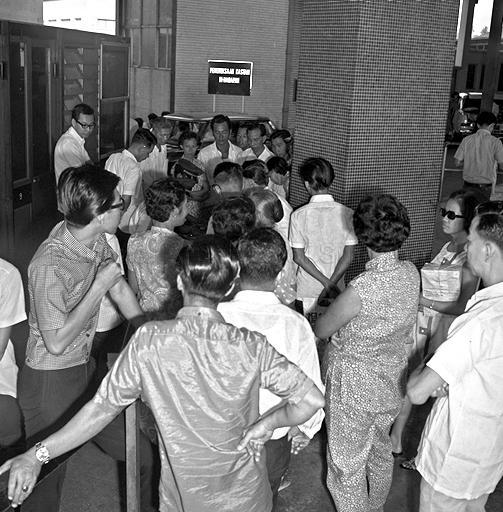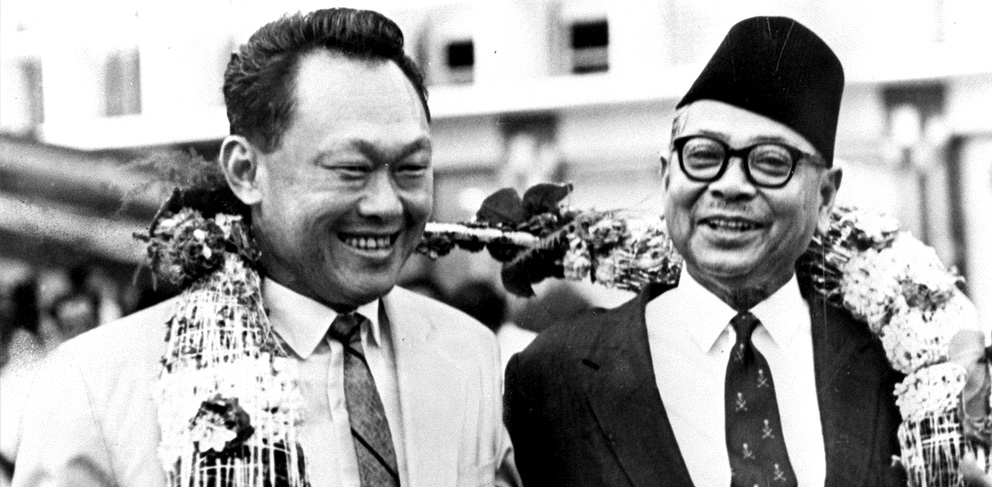The lesser-known drama following Singapore and Malaysia’s breakup

- 1.7KShares
- Facebook1.6K
- Twitter12
- LinkedIn27
- Email28
- WhatsApp55
[Malaysia-Singapore Relations: Crisis of Adjustment, 1965-68 was referenced for the writing of this article.]
Malaysia and Singapore have a long and intimate history. We share pretty much the same ethnic background, languages, and we were even originally one country; when we both got conquered by the British, we were together known as Malaya. We both fought the Japanese, and back in 16th September 1963, we even formed “Malaysia” together! (which is why we celebrate the “Malaysia Day” public holiday, in case you didn’t know.)
But as with every close and significant relationship, there is bound to be some conflict and friction. And in the case of Malaysia and Singapore, we’re of course, referring to the time when we split up in 1965. 😥 The relationship soured way more than a basket of lemons, to the point where both countries were ready to deport each other’s citizens back home!
The breakup was inevitable, though, as…
Malaysia and Singapore had very different visions for the future

Though at one point we were a couple country, the leadership for both were still separate. The ruling political party in Malaysia at that time was “The Alliance” (ancestor of today’s BN) [honestly, this name is cooler], while in Singapore, it was the People’s Action Party (PAP). As they began to work together, the two parties realised that they really have problems seeing eye to eye. PAP had more socialist principles, and this put them at odds with The Alliance (particularly UMNO), on matters such as the special position of Bumiputeras and the national language in relation to the growth of the country.
“I am a Malaysian, I am learning Bahasa Kebangsaan (the national language) and I accept Article 153 of the Constitution (the special rights of the Malays) …. I said that while I accepted Malay as the sole official language, I did not see how it could raise the economic position of the people.” – Lee Kuan Yew, The Singapore Story: Memoirs of Lee Kuan Yew
But wait, how can two people countries just get together without first understanding their differences and deciding whether they were a good match? While it’s almost a natural process for people, countries won’t just rush into things right???

Back when we were still known as Malaya, as part of their strategy to keep us under control, we were forced to split up by our British masters due to the fact that Singapore was Chinese dominant. In the process, many families were split up, and reuniting with Malaysia became sort of a big dream for a lot of the people in Singapore. At the same time, the communist threat was still afoot, and the British wanted PAP to retain power for the British’s own military and economic interest in Singapore.
Hence, PAP used the reunion with Malaysia as an election promise in Singapore, while the British persuaded Tunku Abdul Rahman to include Singapore in the merger, saying that it would help stop the communist from spreading further, and even offered to include Sabah and Sarawak to merge, for access to their natural resources. After much pleading and bargaining, Tunku Abdul Rahman accepted.
Though for about 2 years we’ve tried to make it work, the disagreements soon became too much to bear. PAP’s repeated calls for a “Malaysian’s Malaysia” challenged the Alliance’s principles, and they even organised a political convention with other opposition parties. Sparks were flying, and things such as this were said:
“If the Malays join other parties especially those that are led by non-Malays, the consequences will be very grave.” – Inche Samad Idris, Deputy Menteri Besar of Negeri Sembilan, Utusan Melayu (April 21st, 1965)
Eventually, to prevent the tension from escalating, which might involve the direct take over of Singapore, and potentially cause civil unrest, we broke up. And like most break-ups, it wasn’t a clean and mature affair…
Operation Swop: When Malaysia wanted to kick out 60,000 Singaporeans
Even though we broke up with each other, there were still 50,000 Malaysians and 60,000 Singaporeans working in each others countries. That’s about 10,000 less things compared to what some girls leave at their ex-boyfriend’s house. But after the split, Malaysia and Singapore began to tighten control over their citizens crossing the Causeway. For instance, it used to be that you only need to report to the nearest police station, but proper passports were now required.

Now responsible for the own fate, the little island of Singapore had much work to do, and among other things, it was solving their rampaging unemployment rates. Singapore’s solution was to save its jobs for Singaporeans, by issuing more work permits to their citizens, and give less jobs to foreign workers (mostly Malaysians).
Our gomen was obviously not pleased with Singapore’s actions, and decided to respond with Operation Swop, where all Singaporean workers would be shipped back, in exchange for all the Malaysian workers to return. Singapore initially agreed to it, but to the people’s relief, both gomens decided to call it off, because they themselves realised it was TOO IMPRACTICAL.
Still, the break-up remained, although many were still hoping that the two would reunite again, including some in Malaysia. We both had a lot at stake for a reunion, and were very dependent on each other. In terms of economy, 32% of exports and 41% of imports from Malaysia then were conducted through Singapore. But right after Singapore gained its independence, the trade between us came almost to a complete stop.

What followed was a tariff war. On the very day of the break up, Singapore restricted imports of over 185 types of items, ranging from footwear to refrigerators, and ended the special treatment of Malaysian goods, imposing licensing and quota regulations. Malaysia, on the other hand, responded with a call to buy only Malaysian products, and ordered their government departments to purchase only Malaysian products, even if it cost 10% more.
There were also calls and expectations from international parties for a common market (sort of like what Europe has but only with Malaysia and Singapore), because not many expect a small island with no natural resources, no industry, and had to depend on others even for water to survive on its own, let alone succeed. But to the surprise and shock of many, Singapore refused.
Singapore even went and split from Straits dollar, the currency that the British colonies, e.g. Malaya, Singapore, Sabah and Sarawak were using, and started their own currency. Malaysia eventually followed.

That was such a long time ago, we’re friends now right 😐 ?

The split was over 50 years ago, and much has changed over the decades. Remember when we used restrict border access? Hah! We have even built a second bridge into Singapore now. And remember that time we didn’t want to talk to trade with each other? HAH! Singapore is now one of Malaysia’s most significant trade partners, with bilateral trade worth USD83.53 billion in 2022.
As for Singapore, it developed from a small island with almost nothing into one of 21st century’s most recognisable economy hub, even becoming one of the world’s richest countries currently (by GDP per capita).
Sometimes, when things seem like it’s at its worst, and it can never get any better, we can remember that Singapore and Malaysia persevered through their trials and hardship, and made a peaceful relationship with each other in the end. With our closeness and history, it would be a shame if we weren’t on good terms. Malaysia’s insistence to maintain close and friendly diplomatic ties with everyone might be a great example for Malaysians to look up to. After all, what good could come from making enemies, when we could have rich friends instead 😉 .
[This article was originally published in 2017, and has since been edited to keep up with the times.]
- 1.7KShares
- Facebook1.6K
- Twitter12
- LinkedIn27
- Email28
- WhatsApp55



